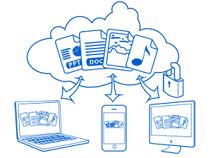All companies need to be prepared for emergencies; however, there are an astounding percentage that are not. If some sort of catastrophic event were to happen, would your company be ready? Do you have a disaster recovery plan in place that will get you through? Keep in mind that the term 'Disaster' applies to many different types of events, not only encompassing events brought by mother nature, but also accidental, or deliberate human influence such as fire, flood, a loss of communication or even a virus. In order to ensure total preparedness, there are two important key plans you should consider. The first is a Business Continuity Plan (BCP), and the second a Disaster Recovery Plan (DRP). While the two have many things in common, the main differentiator is that a DRP focuses on recovery whereas a BCP allows for continued business until recovery is accomplished.
There are several steps to take in order to build your BCP and DRP plans and we've included some tips below on how to get started. Your peace of mind and the future of your company is of the utmost importance and we hope you find this information helpful.
IT Support Blog
Tags: IT services, DR, Disaster Recovery, Redundancy, Backup
Tags: IT services, Shareware, Blogging, Blog, Article Publishing, IT Support, Tablet Computer, Customer Engagement, Web Content, targetted Marketing
PC Methods offers a five block support offering for our IT clients. Not all clients choose to take advantage of all five blocks, but they are there if you want the best possible combination of value and service. The blocks are: Project Work, Centralized Services, Network Administration, Virtual CIO, and Support. These are the product offerings that clients should look for when selecting the best possible IT business partner.
Tags: IT services, Disaster Recovery, Backup, Backup to the cloud, Cloud Computing, Blogging, Blog, Anti Virus, Virus Removal, computer repair, Symantec, Malware, Security Software, Small Business, Sage 300 ERP
In 1990 and 1991, PC Methods was instrumental in providing a complete workstation and power conditioning system to Living Bible Translators in Harare, Zimbabwe. We learned about six lessons that will still apply to setting up systems in other countries.
Tags: IT services, Backup, St. Charles PC Repair, Fox Valley PC Support
The three main trends that are driving the backup to the cloud generation are: 1) the need for data control; 2) the explosion of mobile device usage and the resultant business data access; and 3) the mass acceptance of virtualization.
- Data Control. Businesses rely upon business management applications such as Sage ERP ACCPAC for a seamless, scalable and integrated solution that operates on Windows XP, Vista and Windows 7. As this type of software is a critical aspect of any business and runs in real-time, the data associated with financial and customer information can easily be compromised. As the number of staff which has access to critical data increases, it becomes even more necessary to backup to the cloud, for a business system that works to safeguard critical business data.
- Mobile Device Access. Technology has enabled a type of mobility for business staff that has necessitated the use of devices such as the BlackBerry, iPhone, Androids and Smartphones which keep them connected to the internal computing platforms of their company's critical data. While these mobile devices have liberated productivity, their use has also placed business data in a much more vulnerable position. As users continue to embrace a variety of devices that sync contacts, calendars, email and other data, the chance of compromising critical business data increases dramatically. As it is nearly impossible to manage each individual's devices from an IT standpoint, it then becomes crucial to backup to the cloud to minimize the risk of potentially catastrophic user-generated data mistakes.
- Virtualization. The use of mobile computing devices has also created a more pronounced need for virtualization, as developers release prototypes of items like virtualized mobile phones. Because the devices are multi-functional, it makes sense to tap into the convenience of virtualization, since this could easily streamline applications and make the management of various applications far easier. Since mobile devices are essentially full-blown computers, their support of virtualized environments is inevitable. While this is exciting in the world of technology and the workplace, again, this presents a challenge for the IT departments in the companies where staff utilize virtualized mobile devices. Here again, it is critical to backup to the cloud so that business assets and data are adequately protected.
Cloud data backup technologies have significantly changed the way that business infrastructures are designed and managed. Needless to say, the internal messaging systems and critical data will need to have a regular backup to the cloud. In addition, much of this data will need to be archived and could be subject to legal search under compliance mandates. Therefore, finding business systems that work to manage, as well as safeguard business data will become imperative. For this reason, the need to backup to the cloud will only increase over time.
Tags: IT services, Backup to the cloud, Cloud Computing, ACCPAC ERP








